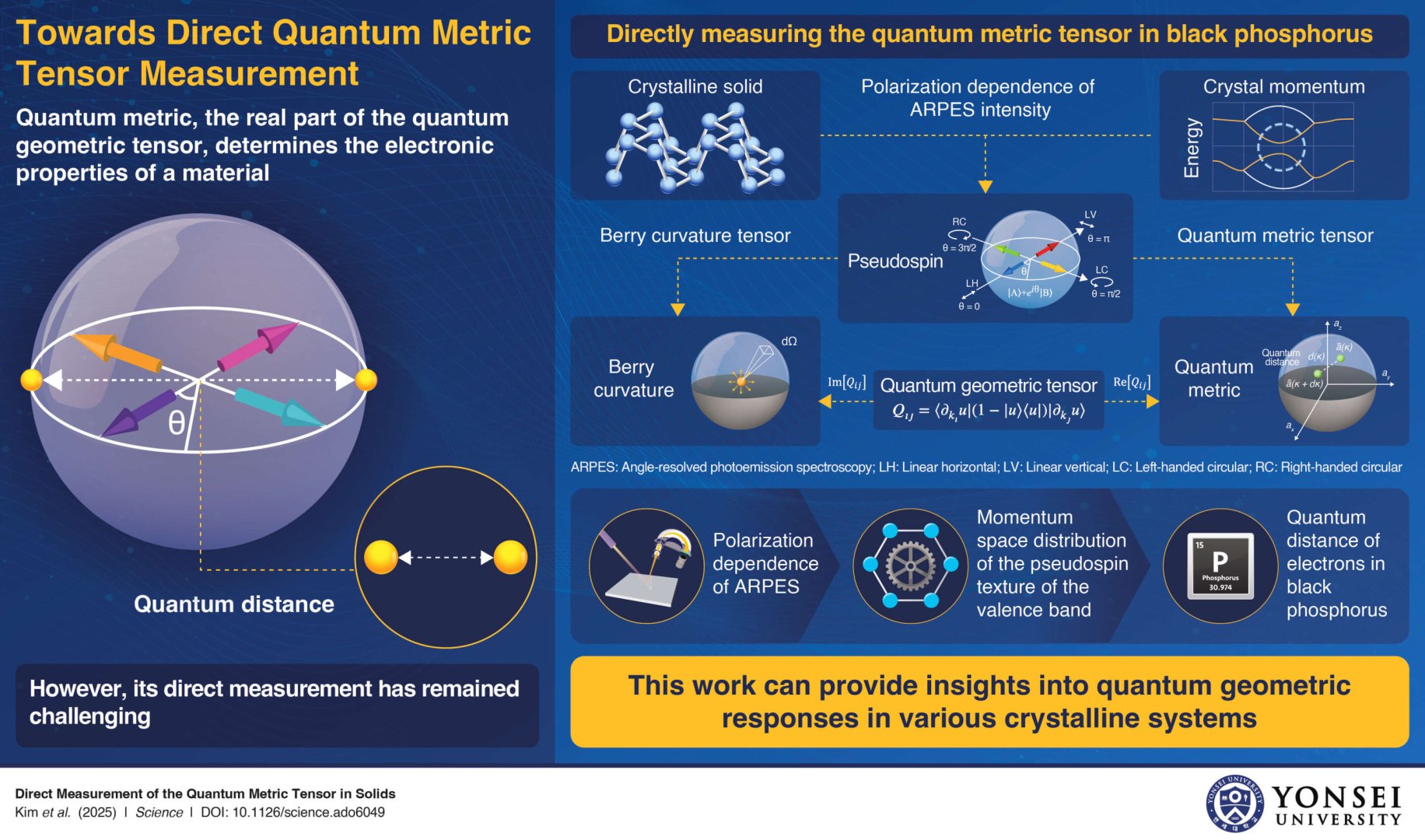For decades, physicists have talked about quantum distance, a way of measuring how similar or different two quantum states are. In this strange scale, a distance of one means two quantum states are identical, while zero means they are complete opposites.
Though it’s been a part of theory for a long time, directly measuring quantum distance in real materials has remained out of reach. This is because it requires not just seeing electrons, but understanding their subtle geometry at the quantum level, something extremely hard to capture in solid materials.
Now, for the very first time, a team of international researchers has achieved what many thought impossible. These researchers have experimentally measured the quantum distance of electrons in a real crystal.
“Measuring the quantum distance is fundamentally important not only to understand anomalous quantum phenomena in solids, including special ones such as superconductors, but also to advance our quantum science and technologies,” said Keun Su Kim, one of the study authors, and a physics professor at Yonsei University in Seoul, South Korea.
According to Kim, a precise measure of “quantum distances would help develop fault-tolerant quantum computation technologies.”
A science trick that involves black phosphorus
As part of their study, the researchers suggested using black phosphorus, an elemental layered crystal with a simple and well-understood structure. This simplicity made the material an ideal candidate for probing the quantum geometry of electrons.
In order to measure the quantum distance in black phosphorus, the scientists used a powerful method called angle-resolved photoemission spectroscopy (ARPES), which can map how electrons behave inside a material.
The study then went a step further. By carefully analyzing how the results changed with the polarization of light, the team could reconstruct the pseudospin texture of the electrons in the material’s valence band.
 A diagram showing the process of measuring the quantum metric tensor in solids. Source: Keun Su Kim/Yonsei University
A diagram showing the process of measuring the quantum metric tensor in solids. Source: Keun Su Kim/Yonsei University
In simpler terms, the researchers looked at how an intrinsic property of electrons, a kind of quantum orientation, varied across momentum space, or across the map of all possible electron motions.
This required extremely precise measurements, so they used synchrotron radiation from the Advanced Light Source in the United States, one of the world’s most advanced facilities for producing high-intensity, tunable beams of light.
From the data, the team was able to directly calculate the quantum distance and, more importantly, the full quantum metric tensor, a mathematical object that describes the geometry of quantum states.
This is the first time the quantum metric tensor of Bloch electrons (electrons in a crystal whose motion is shaped by the crystal’s repeating pattern of atoms) in a solid has ever been fully measured.
“In this work, we report a direct measurement of the full quantum metric tensors of Bloch electrons in solids using black phosphorus as a representative material,” the study authors note.
The significance of measuring the full quantum metric tensor
Measuring quantum distance is not just about curiosity. It can help explain unusual behaviors in materials, such as why certain solids become superconducting at high temperatures or why some conduct electricity without resistance.
It could also guide the design of fault-tolerant quantum computers, where precise control of quantum states is essential. However, this is just the beginning. The method has so far been demonstrated only in black phosphorus under controlled conditions.
Applying it to more complex materials, especially those with strong electron interactions, will be more challenging. The researchers hope to expand their work to a wider range of crystalline systems, paving the way for improved semiconductors, better superconductors, and practical quantum technologies.
The study is published in the journal Science.
